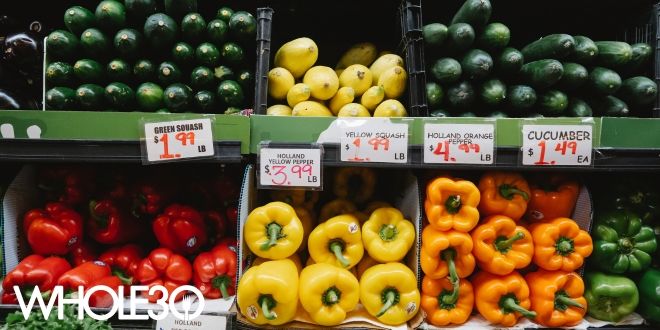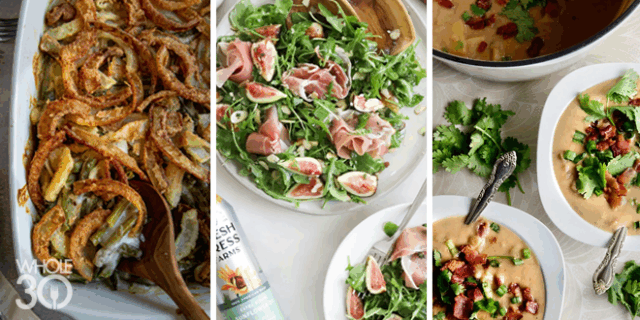It feels like it’s time to start dressing in your finest formal wear to go grocery shopping. Is it totally impractical in almost every way? Yes. But sashaying around the produce section in a ball gown or tailcoats will make you feel properly fancy. (And help match the experience’s high-dollar price tag.) If you’d rather avoid the stuffy opera attire and save money instead, learning how not to waste food is a much better idea.
Outside of sales and coupons, you can’t change the price of the goods on the shelves. So your best option to make your budget stretch is to maximize what you buy. Since food in the garbage isn’t very useful, it’s important to get the most out of your ingredients.
That’s not the only reason to do it, of course. Reducing food waste is a noble pursuit with many benefits. But right now—in this age when every goose (or chicken) seems to be laying golden eggs—stretching your budget is a big selling point.
And budget will be the focus of our simple, three-step plan for learning how to not waste food. Each action works well in isolation, but stringing them together is the best way to guarantee the biggest bang for your buck by reducing food waste.
Step 1: Plan ahead to make your zero waste kitchen a reality
Having a shopping list built off your meal plan won’t guarantee you only buy what you absolutely need. (You should have a little treat if you want—you’ve earned it.) But being prepared does give you the best shot at buying groceries you’ll use.
It can be fun to shop on vibes only. But just because the kohlrabi is extra playful looking today doesn’t mean you’ll use it. Instead, shop from a list that’s based on the meals you plan to eat that week. You won’t end up tossing the science experiments growing in the back of your fridge when you couldn’t fit kumquats into a meal.
And planning can even provide room for experimentation. Listing the meals you’ll make means you’ll know if those beautiful maitake mushrooms can actually be added to one of your dishes this week.
You’re going to spend the money on food one way or another. But when your goal is finding how to not waste food, your mentality is maximizing your money instead of simply going without. It’s the difference between money well spent and money (and food) wasted.
Step 2: Experiment with what to do with food scraps
People still constantly say “waste not, want not” for a reason. It’s catchy and easy to remember, but it’s also true. Our version isn’t quite as snappy or memorable, but: you bought the groceries, so use every bit of them you can to stretch your dollar further.
Are there inedible parts of all types of foods? Absolutely. This step in learning how to not waste food isn’t about making orange rinds and banana peels into the world’s worst fruit salad.
Much progress can be made by saving the edible, but odd, cuts of the veggies you prep and making a stock. Throw the tops of carrots and celery, the ends of zucchini or onions, and the weird and pointy green bean parts into some water, and you’ve got yourself the start of soup. (If you’re a meat eater, the same goes for the bones and trimmings of your beautiful roast chickens or pork chops.)
Most of the time, taste and nutrition is more important than perfect presentation. So don’t be scared to use the strange bits. And if you’re still scared of the odds and ends, you can always make a mash or a purée.
Step 3: Practice proper storage to discover how to reduce food waste
Outside of a cut or burn, nothing in the kitchen hurts more than throwing away food you spent money and time on.
Luckily, there’s are simple solutions to save yourself the heartbreak. Learn to store your leftovers in the right containers and put your freezer to work. Proper storage is so important when reducing food waste and maximizing your budget at the same time.
A little bit of planning can also help you get the most out of your leftovers. Cook enough of a recipe for three meals. Then plan to eat one fresh, have one leftover in two days, and freeze the last portion for later.
Using clear containers with air-tight lids is a great idea. You can easily see what’s in your fridge, and your food remains safely tucked away, waiting for you. Nobody is scraping the mold off of a meal they found in the back of the refrigerator—please don’t do that. Knowing a meal is there and tastes almost as good as it did fresh makes you more likely to eat it instead of throwing food and money in the trash.
Step into savings by reducing food waste
Now you know how to not waste food, so start putting what you learned into practice. Follow these simple steps to save yourself money and reduce food waste:
- Only buy what you need or know you will eat
- Use as much of the ingredients you buy as possible
- Save what’s left over so nothing goes to waste
And who knows? You might reduce waste and save so much money you can afford fabulous new jewelry to bring the bling to your grocery store outfit—throwing the whole canned goods aisle into a fit of jealousy.
More budget tips, kitchen hacks, and recipes can land in your inbox weekly. All you have to do is sign up for free Whole30 emails today.















